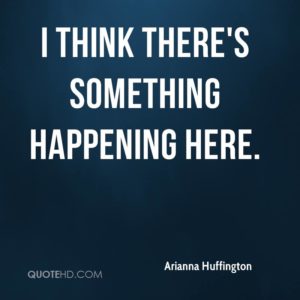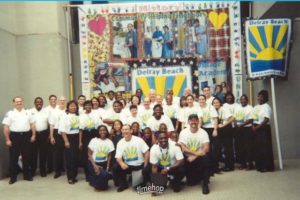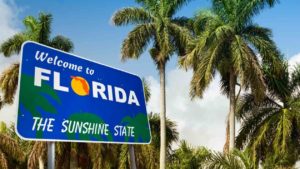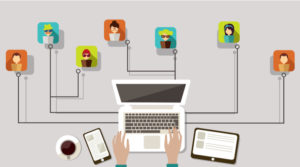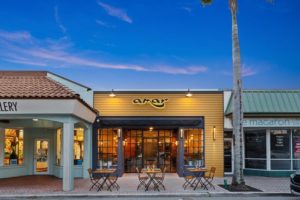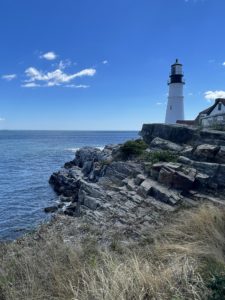
What do you see in those clouds?
“Rows and floes of angel hair
And ice cream castles in the air
And feather canyons everywhere
I’ve looked at clouds that way
But now they only block the sun
They rain and snow on everyone
So many things I would have done
But clouds got in my way
I’ve looked at clouds from both sides now
From up and down, and still somehow
It’s cloud illusions I recall
I really don’t know clouds at all.”
Those lyrics from the Joni Mitchell classic were in my head these last few weeks when I spent some time exploring idyllic small towns in Maine. I’m not really sure why, I haven’t heard the song in years but there it was as I found myself in Kennebunkport which is impossibly beautiful, Boothbay Harbor which teems with charm, Bath which bills itself as Maine’s coolest little city (and just may be), Brunswick with the bucolic Bowdoin College and Cape Elizabeth whose beauty defies description.
In a word, Maine is enchanting, and I find myself falling in love with a place all over again and realizing that “place” as a concept means a lot to me.
Of course, people are paramount (with golden retrievers a close second) but place is up there in importance —at least for me.
I’ve been here for a month and that’s enough time to see a few nooks and crannies and to think “hey, this place feels good.” I can see myself spending time here. It’s a good place. And place is important.
I’m coming back to Delray this week and that’s good too. I’ve never done anything like this before —working remotely so far away from home—but post Covid I’m ready to live life and ready to shake it up a little. I’m ready to indulge some dreams.
If not now, when?
After all, I love it when friends pursue their passions.
My childhood friend Joe is a nationally ranked “one wheeler” in his age group and loves the sport. He lights up when he talks about his experiences on trails and hanging with the one wheel community.
Another buddy Ben just came back from a bike trip in Europe—50 miles a day —and while the mere thought of that makes me sore, Ben would and could do 100 miles a day if he could. He’s always been an adventurer.
While I was looking at clouds on Casco Bay my brother from another mother Scott was coaching baseball and recently took his champion Virginia based team to a major tournament in Tallahassee. They didn’t win, but they are still champs and I’m certain Scott is a great coach just like his dad was; they had a passion for baseball and people too. That’s an unbeatable combination.
Me, I like to write and explore places and topics that interest me.
I came to Maine to fulfill a vow I made to myself when I had a serious case of Covid that landed me in the ICU two years ago.
It’s time to start living—time to see the other side of those clouds that Joni sings about.
Those clouds can get in the way or they can be anything you want them to be. Two years ago they rained on me pretty hard leaving me alone with my thoughts, hopes, fears and dreams.
I realize I’m privileged to have this experience and fortunate to work for a company that values quality of life and family.
I spend my days grateful for so many things; the beauty that surrounds me, the love I get to enjoy with my wife, family and friends and the simple pleasure of being able to breathe freely again.
This time of year I relive my Covid experience and remember when I could barely draw a breath. Yes, I’ve looked at clouds from both sides now.
Most of us have by the time we hit a certain age. Because while life is precious and beautiful, there’s just no escaping the tough times. Nobody goes through this life unscathed.
Which brings me back to the concept of place.
Here I enjoy the woods, the rocky coast, the pristine Casco Bay, the architecture and the history. I also enjoy the kindness. People here are very nice even through we’re “from away” and even though I’m driving a Subaru with Florida plates. (P.S. every other car here is a Subaru it’s uncanny).
But as I get ready to return to Delray, my home now for 35 years, I look forward to those Florida sunsets, the magnificent skies and even the cloud bursts that mark our endless summer months. I love Florida and value my now 35 years in the ever changing Sunshine State.
But I do wish more would love her too.
One thing I’ve noticed in Maine is a fierce sense of civic pride.
Mainers love this place, Portlanders really love Portland and in nearby Biddeford they are planning some really special things and they are excited to tell the world.
That’s the vibe everywhere we wandered.
When I visited a store in Kennebunkport the young proprietor told me that many of her friends were returning home to do “cool things.” That’s how it should be, I thought to myself. That’s what you want to hear about a place.
And I thought, you know, we’re kind of tough on Boca and Delray aren’t we?
We complain…a lot.
Too much this and too much that and yes there are serious issues. But…you know what? We live in a magical and cool place. We really do.
Joni was on to something. Maybe we need to look harder to see both sides now.

